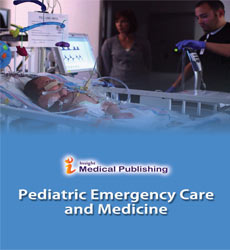Abstract
Spectrum of Diagnosis of Children with Headache in a Tertiary Pediatric Emergency Department
Background: Headache is a common complaint in children. The study aim was to describe the clinical characteristics on the presentation of patients with headache in the Emergency Department.
Methods: A retrospective longitudinal study of children who presented with headache to a tertiary pediatric hospital in Costa Rica. It was conducted in a twoyear period. We included children from 2 years to 18 years. Data was abstracted from electronic ED records, admission and progress note.
Results: Eighty-eight patients were included in the study. 60% were known to be healthy and 40% had a positive past medical history; 33% had a previous history of migraine or chronic non-specific headache. Forty-one (46, 5%) were diagnosed with primary headache and 47 (53, 5%) with secondary headache. The median time from onset of symptoms to the ED presentation was 120 hours (IQR 24-1440) for patients with primary headache and 72 hours (IQR 24-192) for secondary headache. The median time of duration of headache was 60 minutes in both groups. Patients with primary headache had less neurologic symptoms 4 (9.7%) compared with 8 (17%) in secondary headache. Universal headache was the most frequent location in secondary headache patients (60%). In patients with primary headache, frontal location was more common (46%) followed by universal location (26%). A normal physical examination was noted in 38 (92.6%) of the patients with primary headache in comparison with 27 (57.4%) of secondary headache. The principal diagnosis of patients with primary headache was migraine and in secondary headache a viral infection. CT scans were performed in 76% of the patients; and only 12 (13.6%) were reported as abnormal. 37 (42%) of the patients received medical management.
Conclusions: Routine neuroimaging is not indicated in children with recurrent headache and a normal neurologic examination. Management in the ED must be addressed to establish an accurate diagnosis, excluding secondary causes, using an effective treatment and providing the patients and parents a discharge plan that includes treatment and follow up discharge.
Author(s):
Maria José Montealegre- Sauma, Sabrina Sequeira-Sequeira, Alfonso Gutierrez-Mata and Adriana Yock-Corrales*
Abstract | Full-Text | PDF
Share this

Google scholar citation report
Citations : 50
Abstracted/Indexed in
- Google Scholar
- International Committee of Medical Journal Editors (ICMJE)
- Secret Search Engine Labs
Open Access Journals
- Aquaculture & Veterinary Science
- Chemistry & Chemical Sciences
- Clinical Sciences
- Engineering
- General Science
- Genetics & Molecular Biology
- Health Care & Nursing
- Immunology & Microbiology
- Materials Science
- Mathematics & Physics
- Medical Sciences
- Neurology & Psychiatry
- Oncology & Cancer Science
- Pharmaceutical Sciences

